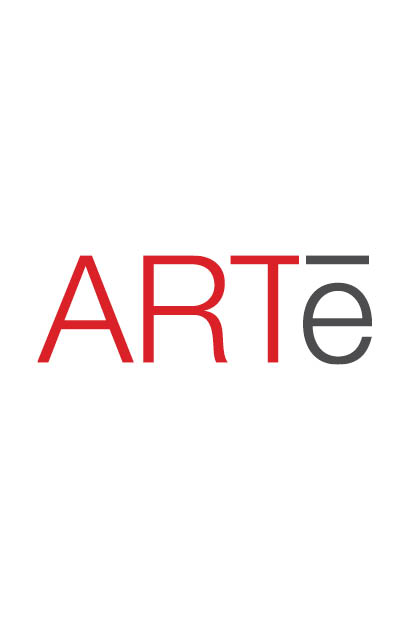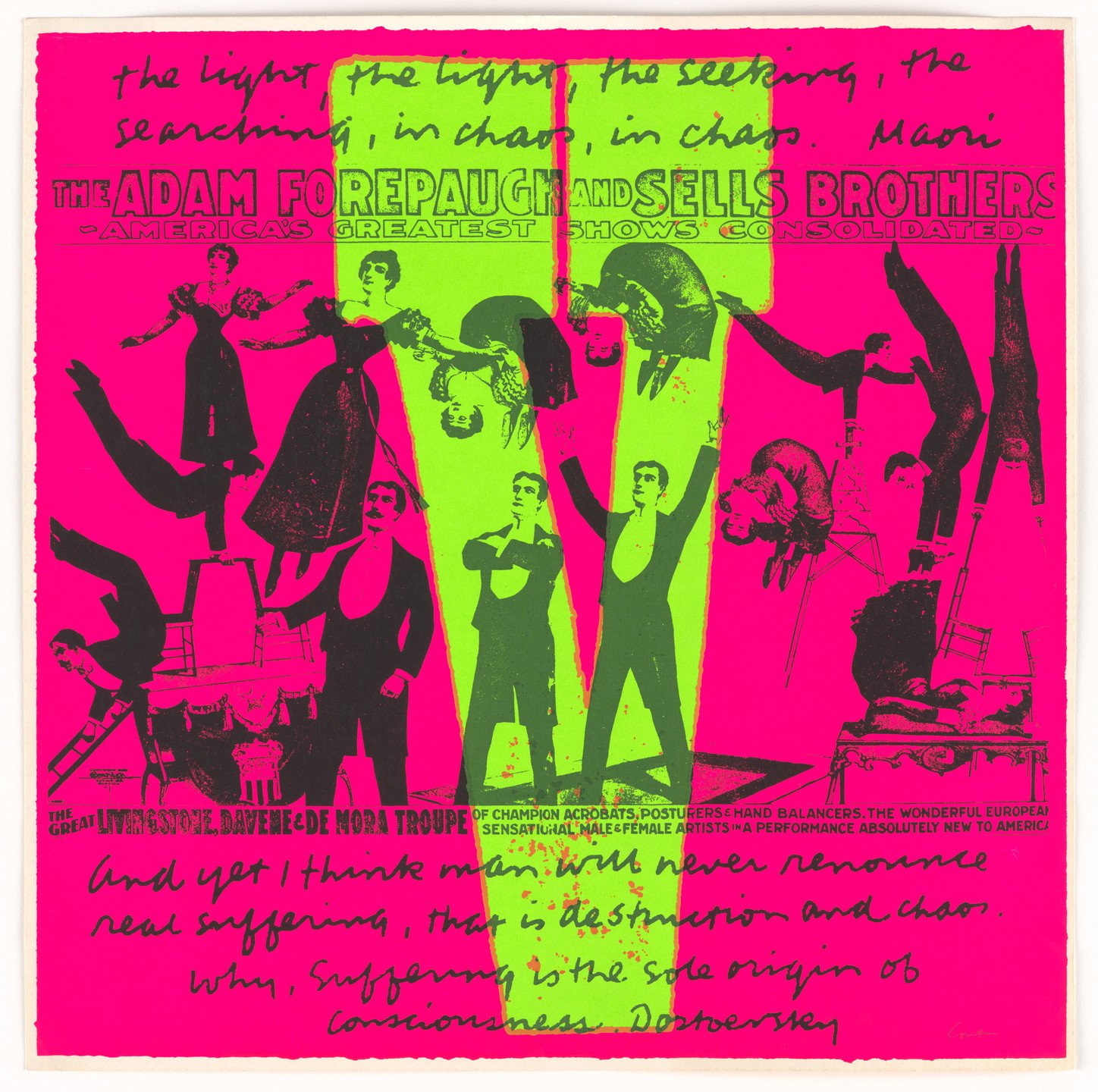Corita Kent • American (1918-1986)
e eye love (from circus alphabet) • Serigraph (silk screen printing) 22.75 x 22.75”
Once upon a time in Los Angeles, nuns wearing black and white habits, armed with guitars and surrounded by brightly dressed women carrying signs and dancing in the sunlight led the Mary’s Day Parade. If you think this was a scene from the movie Sister Act, you’d be wrong, but not far off-base. Because, there really was a time when socially-conscious nuns knocked down the medieval walls separating church and stasis.
When Immaculate Heart School first asked Sister Mary Corita to lead their annual Mary’s Day parade she changed it from a suffocatingly serious liturgy into a joyful and expressive parade complete with handmade flags and cardboard signs.¹ Sister Corita was like a can of brightly colored paint spilled on the somber, well-worn nave floor. People knew she was there, although she was uncommonly shy.
This nun used art to express her love of God, life, teaching and social activism, though not always in that order. This put her at odds with Cardinal James McIntyre who couldn’t fathom her exuberance, her popularity and her messages of peace and love. To him church was a place of sobriety and hide-bound tradition. To Sister Corita and her merry band of Immaculate Heart nuns church was a place to joyfully connect with the world around them. The Archdiocese and the nuns were on a collision course and the nuns were bringing peace signs to a knife fight. Eventually they all left the church.
As a lay person, Sister Corita became Corita Kent, combining her religious and birth names as she settled in Boston for the last 15 years of her life. The 1960s and 70s were a time of social upheaval and Corita Kent was often on the front lines, marching with friends like Father Daniel Berrigan and Martin Luther King. But she never stopped making art. It was her way of building community, expressing ideas and making everyday, ordinary things into the extraordinary.
(story continues below break)

































